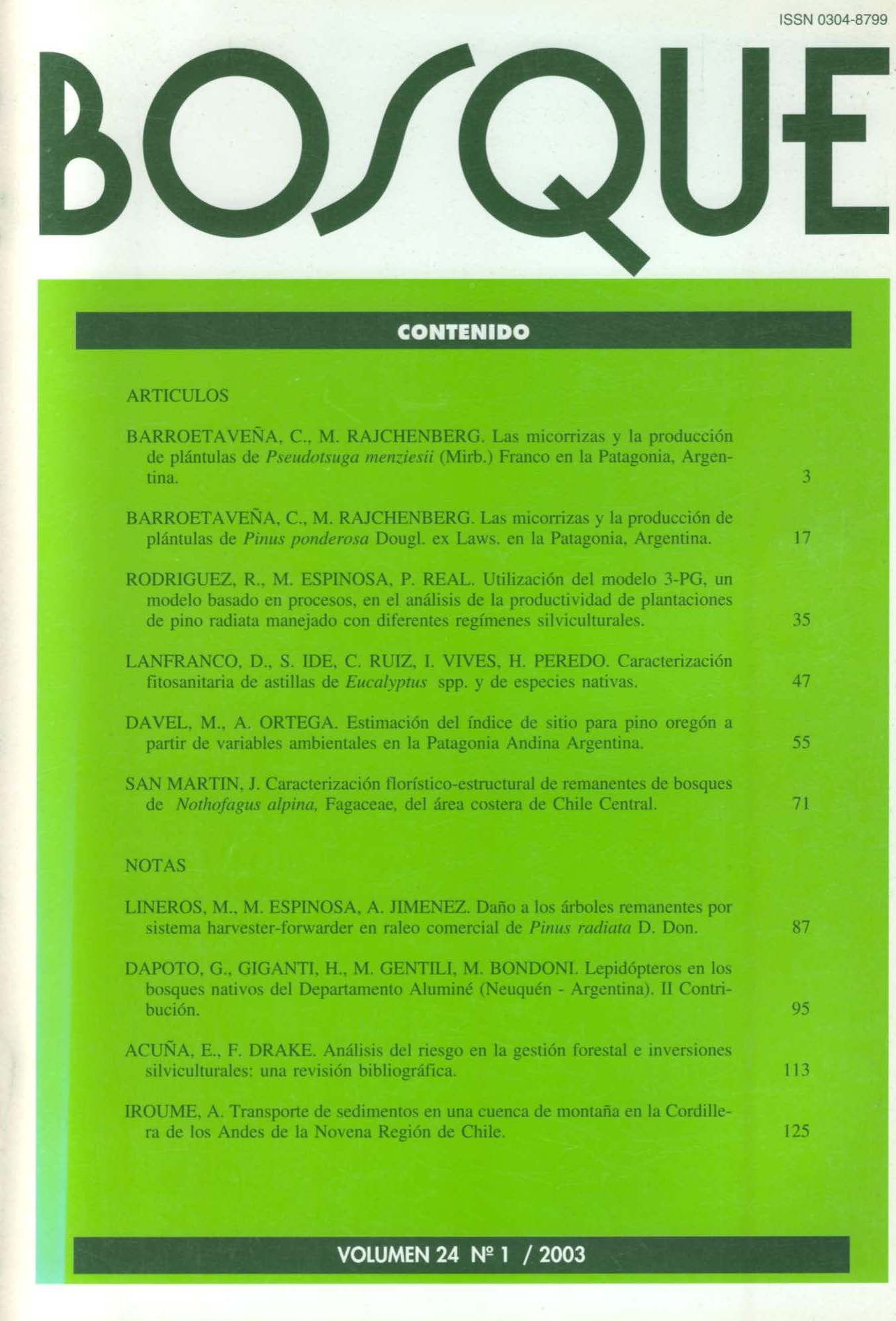Predicting site index from environmental variables in Douglas-fir plantations in the Patagonian Andes, Argentina
Main Article Content
Abstract
Douglas-fir (Pseudotsuga menziesii [Mirb.] Franco) is the second most important exotic tree species in northern Patagonia, where it grows vigorously with no serious disease or pest problems. Its wood is highly valued. Site index curves have been developed to determine productivity in the two growing zones identified within the region. However, these curves cannot predict the site index when there are no plantations nearby. One way to overcome this problem is to predict site quality from environmental variables. The objective of this work was to construct a model that can predict site indices from environmental variables in both growing zones. Data were collected from 64 plantations scattered around the region. One plot was established in each plantation and 12 environmental variables were measured. The two final models, constructed with principal components analysis and the least squares method, explained more than 67% of the variation in site indices. Organic matter content, depth of horizon A, aspect, altitude, and total soil depth and texture, were the contributory variables in both growing zones. Organic matter content was the variable that explained by far the most variation in site index in both growing zones.

